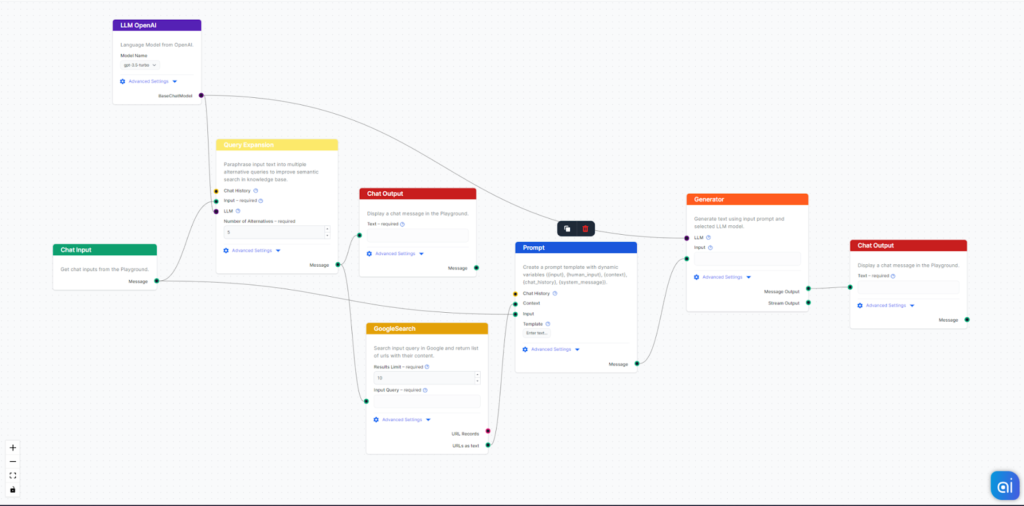
Analyzing the web results for the perfect SEO title can take quite some time and involve various tools. Or it can involve just one keyword and a cleverly constructed Flow.
Just input your main keyword and watch the magic happen. This template searches Google for top-performing results based on the input query and uses this information to suggest the perfect title for your article.
Try it:
What you create:
The Prompt for this template specifies the length of the title and makes sure it only uses results from 2024. Feel free to experiment with the Prompt, adding further instructions or adjusting the existing ones:
“You are an AI language model assistant tasked with generating a title according to results from Google Search. Your task is to provide a title based on the INPUT keyword, considering GoogleSearch results. The title should be a maximum of 60 characters long. If part of the title contains date information, the current year is 2024.
—GOOGLE SEARCH RESULTS FOR KEYWORD
{context}
— INPUT KEYWORD
{input}
GENERATE PAGE TITLE:”
Components breakdown
- Chat Input: This is the message you send in the chat. It’s the starting point of any flow.
- LLM OpenAI: Allows you to pick the ChatGPT model and influence the generation.
- Query Expansion: This allows the Flow to paraphrase and use alternative questions, broadening the bot’s scope beyond the initial query.
- GoogleSearch: Searches the web for results relevant to the user query.
- Prompt: Passes detailed instructions, roles, and behaviors to the AI.
- Generator: Connects AI for text output generation. It uses ChatGPT-4 as default.
- Chat Output: Component representing the chatbot’s answer.
Unique Web Page Title Generator
Boost SEO with FlowHunt's Unique Title Generator! Create captivating, high-ranking titles effortlessly. Try it now for free!
Find the Perfect Business Name with AI: A Step-by-Step Guide
Please provide the content of the webpage you would like summarized into a meta description.




